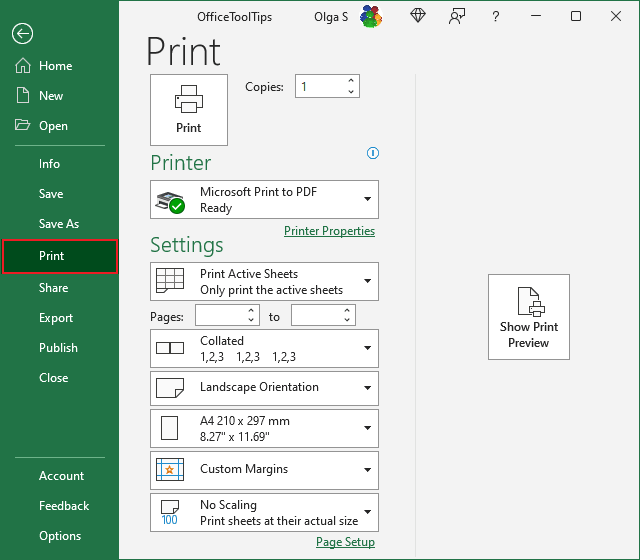Effortlessly Print Large Excel Sheets: A How-To Guide

Excel, part of the Microsoft Office suite, remains an indispensable tool for data management, analysis, and reporting. However, printing large Excel sheets can often be daunting due to complexities like fitting content to pages, ensuring readability, and maintaining the integrity of data. Here's your comprehensive guide to printing those extensive spreadsheets with ease, ensuring your printed pages look just as professional as the screen display.
Preparation Before Printing

Inspect Your Worksheet: Before diving into the printing setup, it's wise to give your spreadsheet a once-over. Check for clarity and coherence in cell formatting, headers, and formulas to ensure everything prints as intended.
- Remove Unnecessary Data: Eliminate hidden or filtered rows/columns to reduce clutter and possibly the number of pages.
- Adjust Cell Margins: Fine-tune cell margins for optimal space utilization, ensuring readability.
- Use Print Preview: This invaluable tool shows how your data will look on paper, allowing for preemptive adjustments.
Page Layout Settings

The Page Layout tab in Excel is your gateway to setting up how your data will appear when printed. Here are the steps to master this setting:
- Page Orientation: Choose between Portrait or Landscape, depending on the natural flow of your data.
- Margins: Opt for standard or custom margins to ensure the maximum use of your page.
- Scaling: Adjust the scaling to fit all columns or rows onto one page, balancing between readability and completeness.

Print Area Management

Printing every bit of your large Excel sheet can sometimes be wasteful or unnecessary. Here's how you can manage your print area effectively:
- Define Print Area: Highlight the desired area and go to 'Page Layout' > 'Print Area' > 'Set Print Area'.
- Clear Print Area: If you need to print beyond a previously set area, clear it from 'Page Layout' > 'Print Area' > 'Clear Print Area'.
- Print Titles: Use this feature to repeat specific rows or columns on every printed page, enhancing document navigation.
Printing Large Data Sets

When dealing with extensive datasets, you might need to:
- Scale to Fit: Use Excel's scaling options to fit your data onto fewer pages.
- Page Breaks: Manually adjust or insert page breaks to control where data pages end.
- Repeat Headers/Footers: This keeps your page headers and footers consistent across all printouts.
Troubleshooting Common Issues

Printing large Excel sheets can come with its challenges. Here are some solutions to common issues:
- Misaligned Columns: Ensure all columns are visible and adjust widths as necessary.
- Cutting Off Content: Use 'Fit to One Page' option or manually adjust page breaks.
- Print Quality: Check printer settings and ensure no setting inadvertently affects print quality.
💡 Note: Always preview your print job to check for potential issues. Mistakes can be costly in terms of time, paper, and ink.
To wrap up this guide, remember that printing large Excel sheets effectively requires careful preparation, thoughtful layout adjustments, and proactive issue management. By following these steps, you can transform your Excel printing experience from a chore into a seamless task, producing professional-quality documents that meet your business or personal needs.
How can I ensure that my Excel sheet prints correctly across multiple pages?

+
To ensure your Excel sheet prints correctly across multiple pages, you can use features like ‘Repeat Titles’ to keep headers on each page, adjust page breaks manually, and use ‘Scale to Fit’ to make content fit within the page margins.
Can I print just a specific range of cells in my worksheet?

+
Yes, you can! Just highlight the cells you want to print, go to the ‘Page Layout’ tab, select ‘Print Area’ and then ‘Set Print Area’.
What do I do if my printout is cutting off important data?

+
Adjust your print scaling to fit all data onto one page if possible, or manually adjust page breaks to ensure all data is included. Review your print preview to spot and fix these issues before printing.